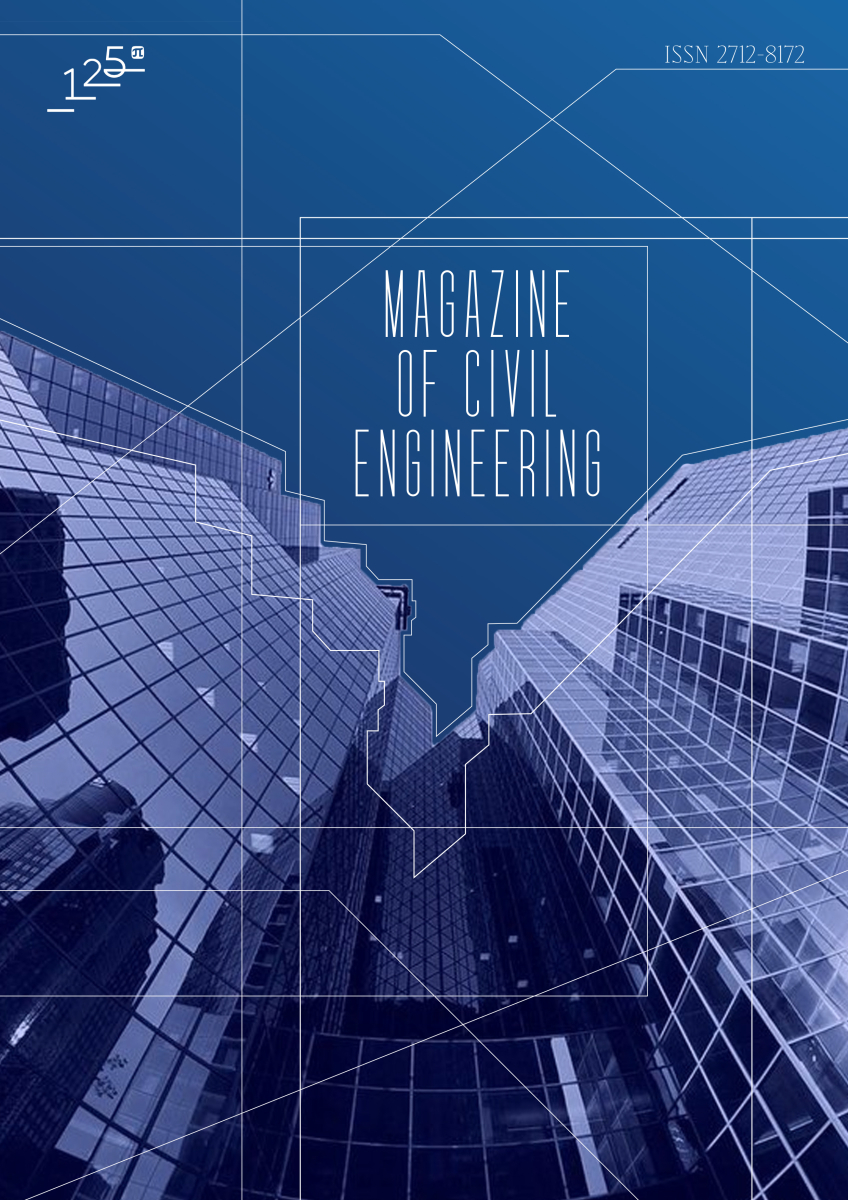Natural vibrations of buried pipeline section
To ensure reliable operation of the pipeline, the design takes into account the natural vibration of the structure caused by the uniform flow of the product along the pipeline. A pipeline section in the form of a steel-concrete cylindrical shell placed in the soil condition is considered. The inner part of the pipeline is made of steel, and the exterior is covered with a concrete layer 30–50 mm thick. Determination of natural vibration frequencies for a two-layer cylindrical shell in the soil is clarified using two methods. The first method is analytical, according to which the dependence for the frequency is obtained using the half momentless theory of cylindrical shells. The second is numerical and is based on the finite element method (FEM) with the construction of the computational model in the Lira Sapr environment. Modeling of steel and concrete layers of the composite shell in the software package was carried out by 4-node plates, which are combined into a common structure by means of absolutely rigid bodies (ARB). Two cases of taking into account the soil condition surrounding the shell were considered. In the first case, a soil mass (with dimensions of 5.3×5.3 m) is created by volumetric bodies, while in the second case, the pastel coefficient for the concrete layer is specified. It was found that the second method of setting the soil conditions allowed to reduce the time of data input by 5–6 times with the same results obtained. The discrepancy between the frequencies of natural vibration for the object of study determined by the analytical method and FEM does not exceed 10 %, and for the first 3 frequencies of the spectrum is not more than 6 %, therefore, both methods are applicable. The use of an analytical expression made it possible to obtain results an order of magnitude faster with the pastel coefficient than with the help of numerical soil modeling using volumetric elements.


